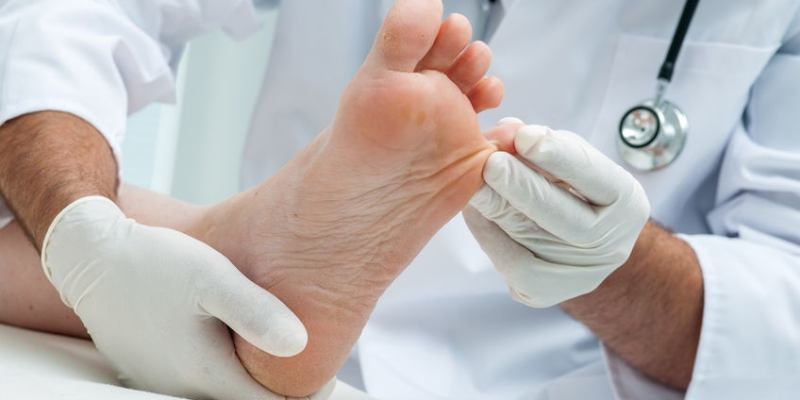The number of people suffering from diabetes is growing each day. Diabetes is a well-known disease, affecting nearly 9% of the world’s population. There are four types of diabetes. Type 1 and type 2, with prediabetes, and gestational diabetes occurring in less people.
Type 1 and type 2 diabetes are the most common. Type 1 occurs when the immune system fights cells in the pancreas where the production of insulin takes place. Type 2 diabetes, on the other hand, is caused by a build-up of sugar levels in the blood that causes your body to build a resistance towards insulin. Additionally, gestational diabetes is common in pregnancy, while prediabetes is when blood sugar levels escalate, but not as much as with type 2 diabetes.
Once a diabetes diagnosis is made, it is best to seek further medical attention from doctors or health centers specializing in Diabetes and DME Supplies. Once the pieces of medical equipment are prescribed, the management of the disease becomes easier.
Health complications associated with diabetes
Unfortunately, diabetes is a life-threatening disease that carries with it a myriad of health complications. The severity of the complications depends on the levels of sugar in the blood and the duration a patient lives with the disease.
Some of the health complications associated with diabetes include:-
- Cardiovascular disease
- Nerve damage
- Skin conditions
- Hearing impairment
- Alzheimer’s disease
- Foot damage
Among the above-mentioned conditions, foot damage is the most common complication associated with diabetes.
Let us delve into specifics.
Diabetic foot problems
Diabetes is notorious for causing foot problems. Unmanaged diabetes can damage the nerves in the feet, leading to loss of sensation. Patients do not feel pain, heat or cold. In the medical world, this condition is known as sensory diabetic neuropathy.
Without these feelings, patients do not feel when sores appear on the feet or when they suffer a cut. Without proper foot wound care, the cut or sore gets infected thus affecting the whole leg. In other situations, the loss of senses may affect the muscles on the feet, causing improper functioning of the leg.
Apart from sensory diabetic neuropathy, diabetes can cause peripheral vascular disease. Peripheral vascular disease is a condition that affects blood flow in the body, and especially the legs and arms. Without proper blood flow in the leg cuts and sores do not heal fast, further complicating the situation.
So what are the common types of foot problems?
Some of the most common foot problems that might develop after being diagnosed with diabetes include:
- Athlete’s foot
- Fungal infection of nails
- Calluses
- Corns
- Diabetic ulcers
- Hammertoes
- Ingrown toenails
- Plantar toenails
Sadly, without proper foot care, diabetic foot problems can become more serious, leading to amputation.
Diabetic foot care tips for patients
In as much as diabetic foot care is a serious condition, with proper foot care, patients can treat these problems successful or prevent them altogether.
- Regularly washing of feet
Cultivating a habit of regularly washing the feet is crucial for any diabetic. However, it is recommended that they use a mild soap. Using scented soaps and those that have harsh ingredients may further complicate the foot problem. Considering that nerve damage may have happened, testing the temperature of the water should be done with the elbow. Soaking the feet is greatly discouraged as this may accelerate the infection. Patients should also make sure their feet are well dried, and especially between the toes.
- Daily foot examination
With the possibility of nerve damage, it is not uncommon for patients to suffer cuts and develop sores without their knowledge. As such, the importance of a daily foot examination cannot be over-emphasized. Sores, blisters, corns, and bunions are some of the things to watch out for. Redness in particular areas of the leg is also a cause of concern, and seeking medical attention is imperative.
- Watch out for dry skin
Even to a healthy individual, dry skin causes itching, flaking, tightness, and redness. With the risks associated with diabetes, patients are advised to watch out for dry skin. Keeping the feet moist, and especially after washing is important. With a doctor’s advice, diabetes patients get to know the best lotion to use.
- Weekly nail check-up is essential
Diabetics need to check their toes for ingrown toes and fungal infections. Toenail trimming is also advised.
- Proper footwear is a must
Wearing the right-sized shoe is vital. Walking barefoot or wearing sandals may expose the feet to harmful bacteria that are detrimental to the feet. Additionally, wearing well-fitting socks with a soft elastic band is advised.
Further diabetes management tips
Apart from proper foot care, diabetics need to do the following to ensure longevity.
- Consuming a proper diet
Diabetes patients need to eat foods that are low in calories. This means doing away with saturated fats, sugar, and excess starch. Additionally consuming leafy greens and vegetables allows the body to absorb much-needed vitamins that ensure optimal health.
Instead of drinking store-bought drinks that are high in sugar, water will do the trick.
- Being active
One of the causes of diabetes is being obese. As an individual suffering from diabetes, being within the recommended BMI is essential. Patients should strive to be more active and engage in physical exercise. Walking, aerobics, and playing with the children are some of the low impact activities diabetics can adopt.
- Take your medication
What good does it make to adopt all the above-mentioned tips and neglect taking medication? Even when they feel they are in good condition diabetics should take their medication as prescribed. By doing so, blood sugar levels are controlled, reducing the risk of complications.
- Stop smoking
Smoking is harmful to health and worse for diabetics. Smoking tampers with the body’s blood flow and can worsen the condition.
All in all, diabetes is a serious condition and it is by adopting the above tips into their daily routines that patients can have a quality of life.













Comments